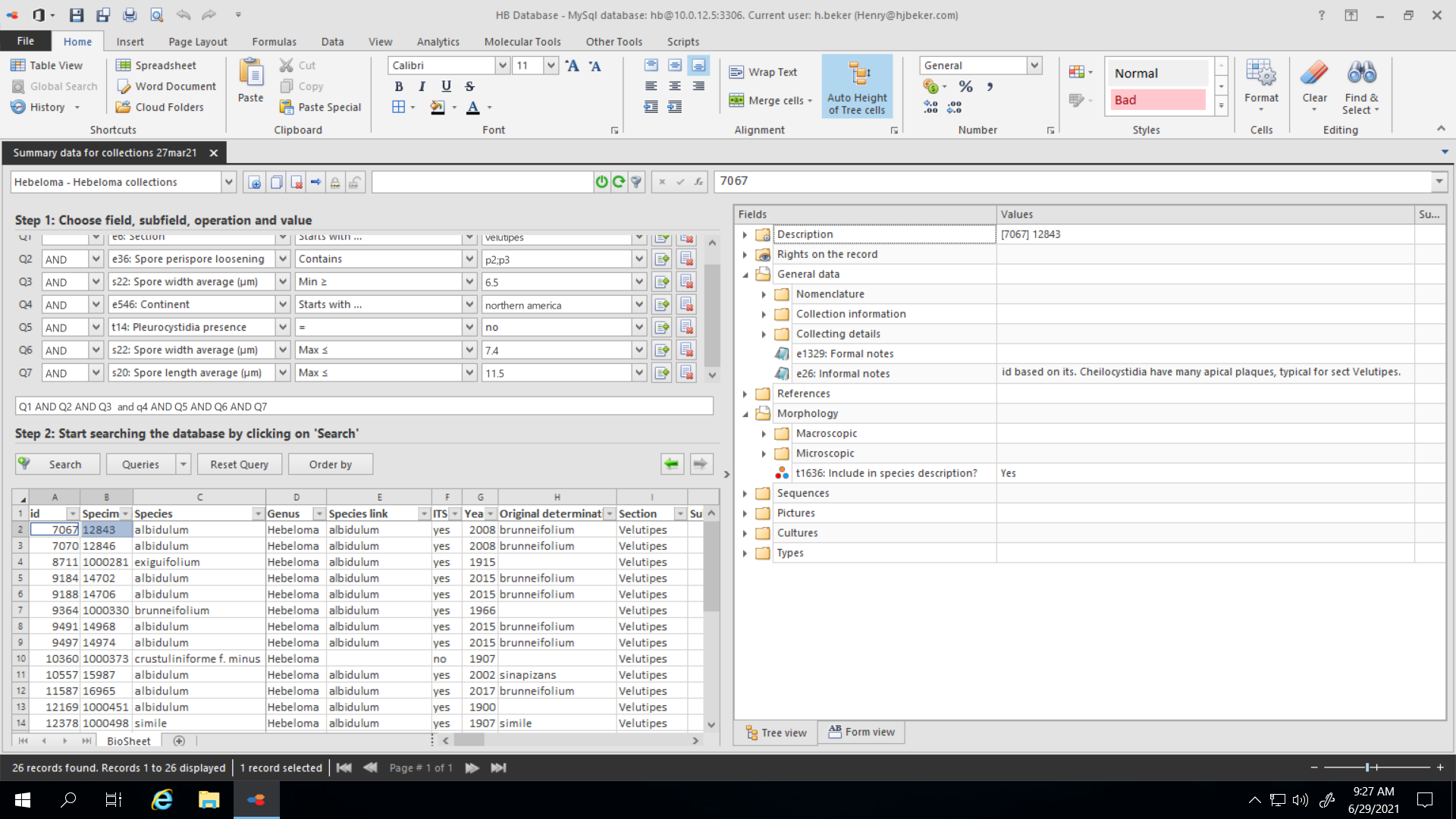
The Biolomics database. The query shown selects collections that should be referred to as H. albidulum based on various morphological parameters.
We use a Biolomics-based database system (version 12, Bioaware SA NV, Hannut, Belgium). Every collection we process has a unique record in the database. This means in particular we have unique "specimen number" such as HJB12345 that may be used for citation in the absence of a herbarium accession number. On this website, these are referred to as HJB IDs. For each collection the database fields are divided into three main sections: General and taxonomic; Morphological (macroscopic and microscopic) and Molecular. All associated photographs, documents, notes, etc. are linked to the collection record. Almost every collection has an ITS sequence associated with it while many collections have several sequences from different loci. We currently have some 10,000 Hebeloma collections on the database including almost all types.
We can use the database to instantly compare species and to find collections with similar properties. We can for example compare all species recorded from sand dunes or identify all collections with spores length > 13 µm. We can also compare species descriptions to look for anomalies, find shared features not formally noted or to gain an understanding of the infraspecific variations that exists within species. Most importantly we can aggregate collection records to form species descriptions. This means that all descriptions have been concatenated using measurements and descriptions from ‘cited’ collections (always listed) in our database. Most cited collections have at least an ITS sequence with a few exceptions where the material (usually types) is too old to obtain a sequence. The database can be used to produce maps, compare photographs or develop queries to build and test species concepts.